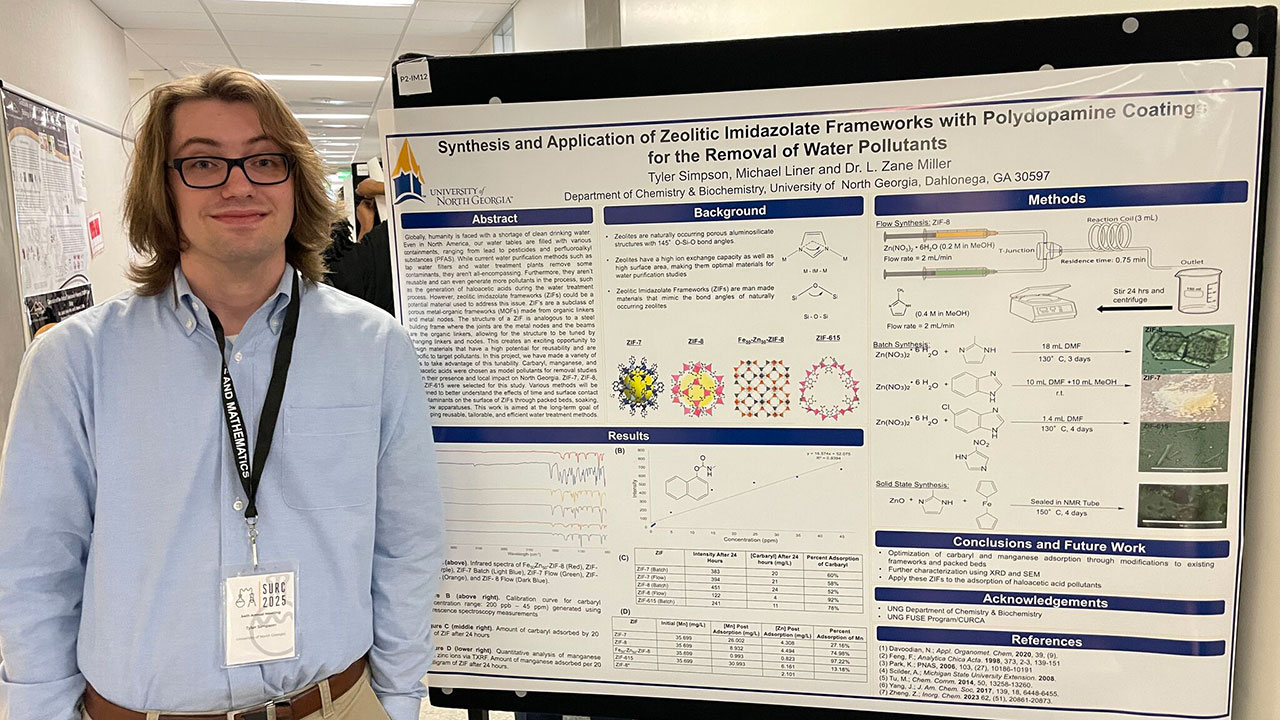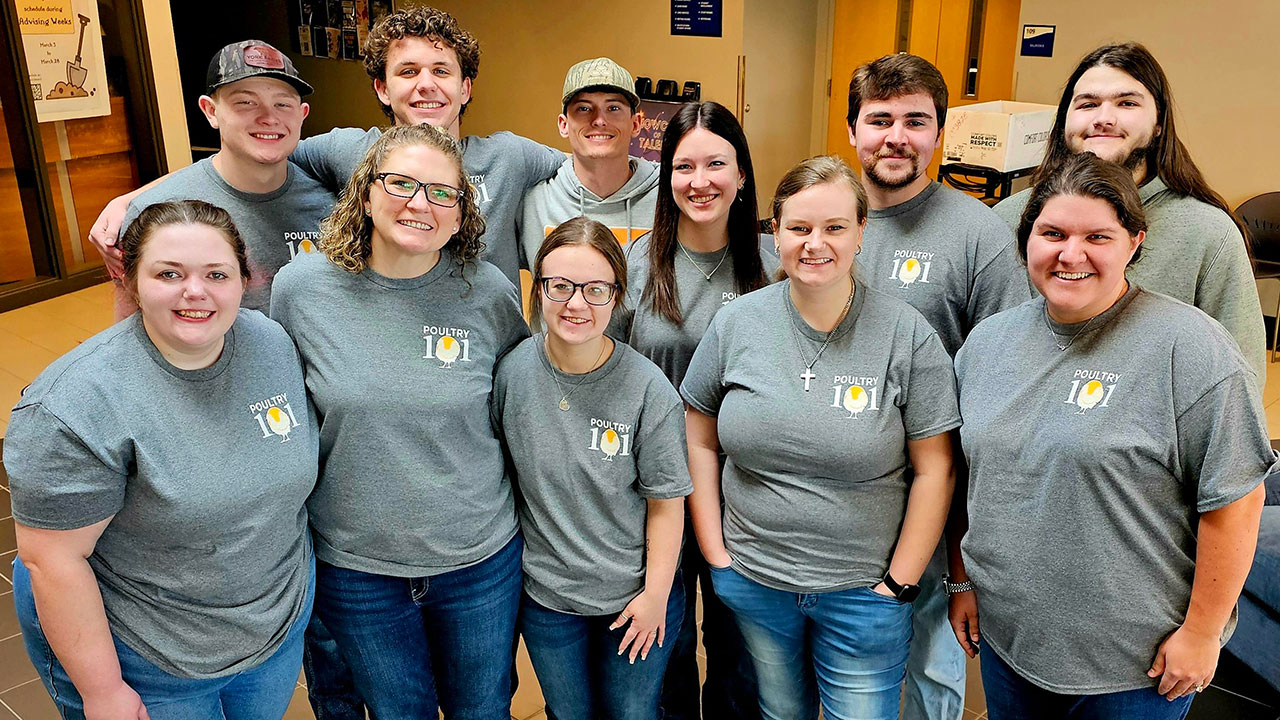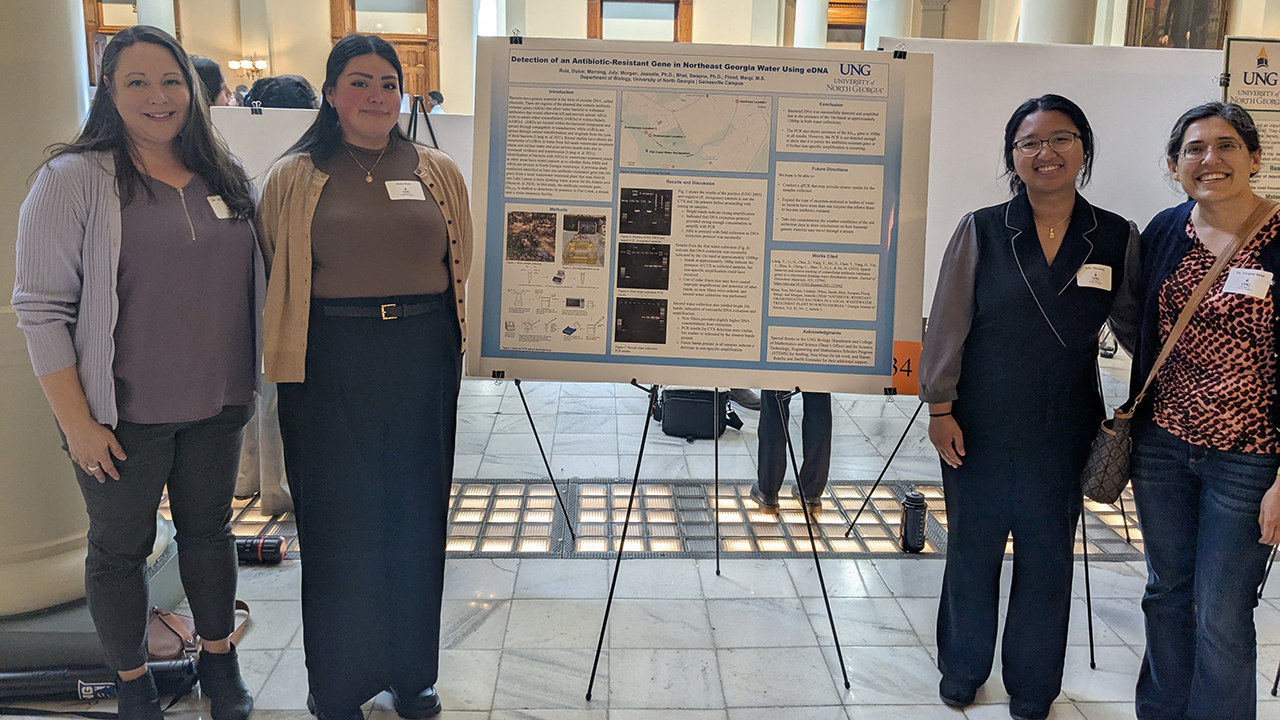USG approves plan for new observatory near Dahlonega Campus

Article By: Staff
Dr. Gregory Feiden tried not to get his hopes up when he learned the University System of Georgia (USG) Board of Regents would vote on a plan to replace the aging observatory at the University of North Georgia (UNG). But he and other members of UNG's physics department celebrated when the project received USG's seal of approval.
"Now I can revel in the excitement," said Feiden, assistant professor of astronomy at UNG. "I think it will be wonderful on all fronts, including teaching students, educating the public and conducting research."
Dr. Richard Prior, head of the physics department at UNG, said UNG needs a new, more modern observatory considering the current facility is 20 years old. Ken Crowe, assistant vice president of facilities at UNG, agreed.
"It is long overdue," Crowe said.
 |
|
This is a proposed rendering of the new observatory. It is expected to have office space, storage space, a small classroom area, a public-access space, two bathroom, and a kitchenette. Two new telescopes with domes will anchor the building. |
The plan is to demolish the North Georgia Astronomical Observatory and build a state-of-the-art facility in the same spot on top of a hill about 4 miles from campus near Pine Valley, UNG's outdoor recreation complex in Dahlonega. The new facility is expected to have office space, storage space, a small classroom area, a public-access space, two bathrooms, and a kitchenette.
Accompanying the new building will be two brand-new telescopes with domes anchoring the ends of the facility.
"The current telescope we have is old and worn out," Prior said.
Feiden agreed, explaining the 1968 telescope does not have defined sufficient pointing and guiding, and the mirror has degraded over time. This limits the scientific research UNG faculty and students can do.
The new telescopes, measuring at 24 and 28 inches, will allow students to see deeper into space. Having two telescopes will also provide students the ability to study multiple aspects of stars simultaneously.
"We can attach a camera to one telescope and record our data, while taking data with another instrument to the other telescope," Feiden said.
The physics department ordered the telescopes last spring at the end of the fiscal year thanks to unused funds from the College of Science and Mathematics. Dr. Michael Bodri, dean of the College of Science and Mathematics at UNG, explained he also has allocated some funds for the construction of the new observatory.
The estimated construction cost of the new single-level 3,200-square-foot building is about $1.4 million, which the university will fund.
The new facility will give students hands-on experience working in a professional-grade observatory with high-quality research equipment, Feiden said.
"We want to give them a genuine experience and prepare them for graduate school or working for an observatory," Feiden said.
Prior said the new telescopes and building provide a boost to the physics program and specifically for students interested in astronomy and astrophysics. Bodri concurred.
"Astronomy is one of the most popular elective classes on the Dahlonega Campus," Bodri said.
Prior hopes to add another faculty member to teach astronomy in the future.
"We are also moving toward offering physics majors a concentration in astrophysics," he said.
UNG students, faculty and staff will not be the only beneficiaries of a new observatory. The current and future building is and will be open to the public on Friday nights following the free show in the George E. Coleman Sr. Planetarium. It is an aspect that sets UNG's observatory apart.
"It is part of the university's outreach mission," Prior said. "And we have a connection to the local astronomy club."
Dr. Lesley Simanton-Coogan, lecturer in the physics department and planetarium director, said the observatory complements the planetarium.
"We can show people a lot of things in the planetarium that can't be seen with the naked eye," she said. "I can show them things happening far away. And I can update them on astronomy news. Plus, we are open rain or shine. But it's still nice to go outside and look at the real sky. A new observatory will help people get excited about astronomy."



